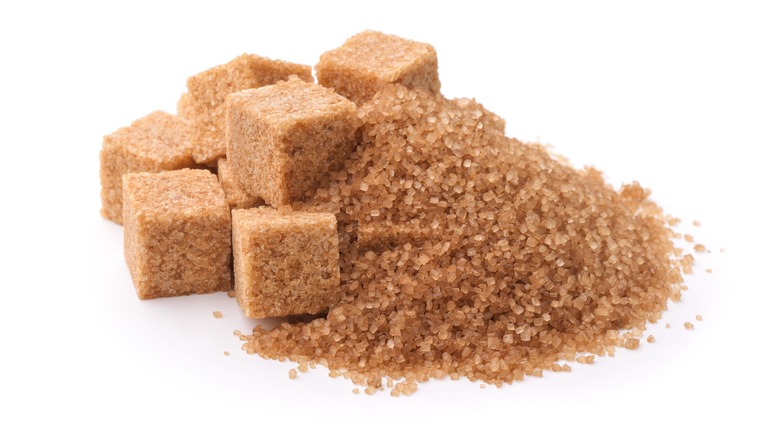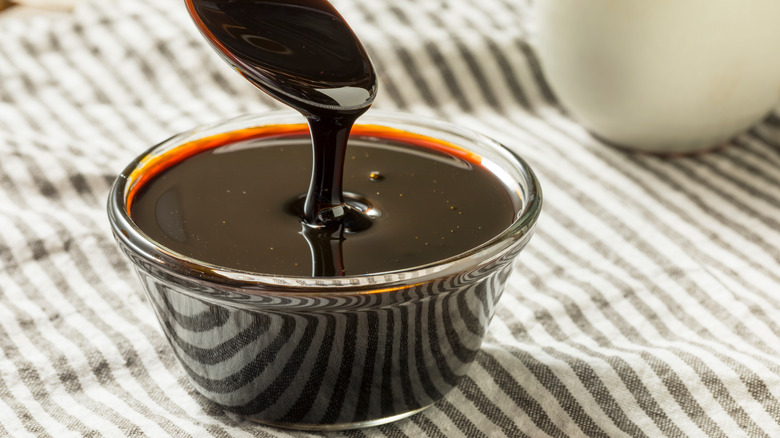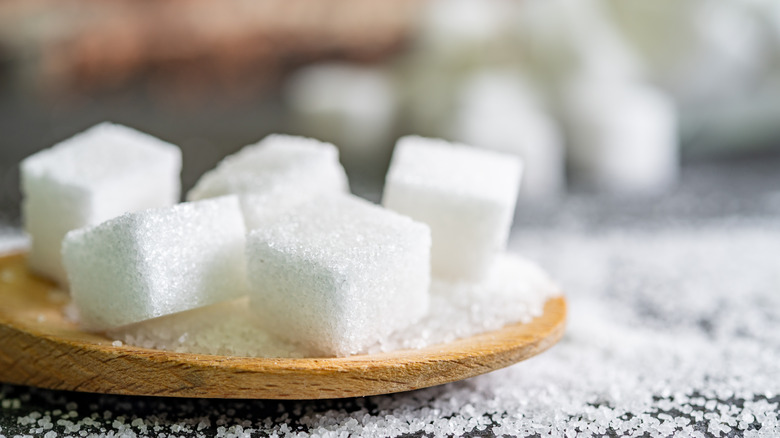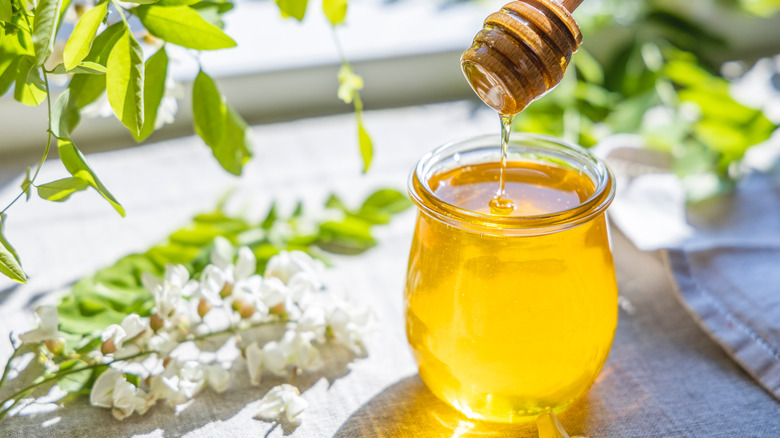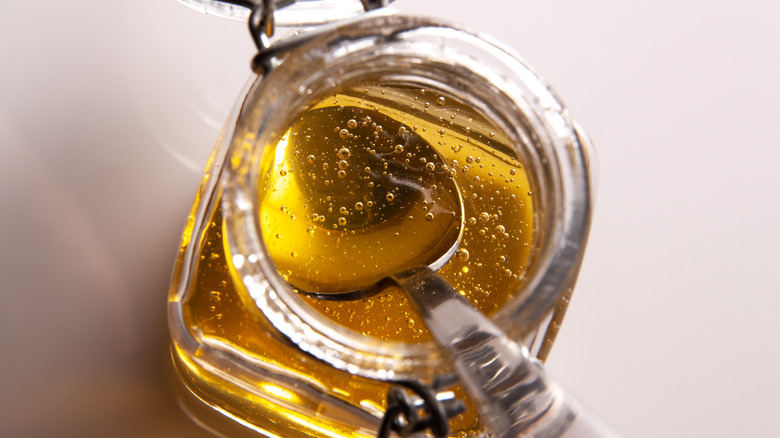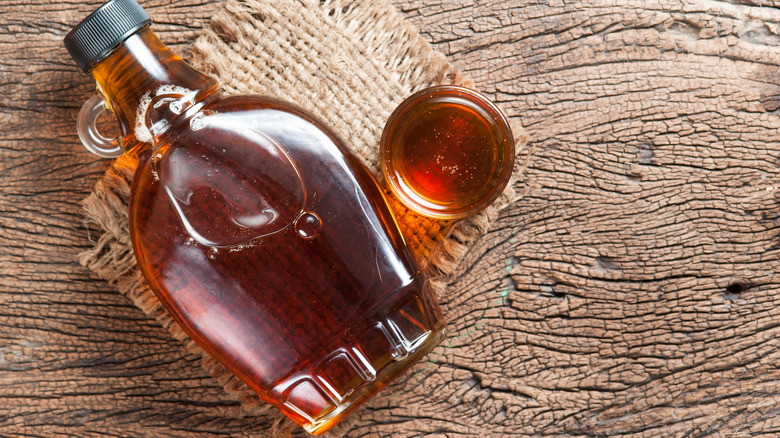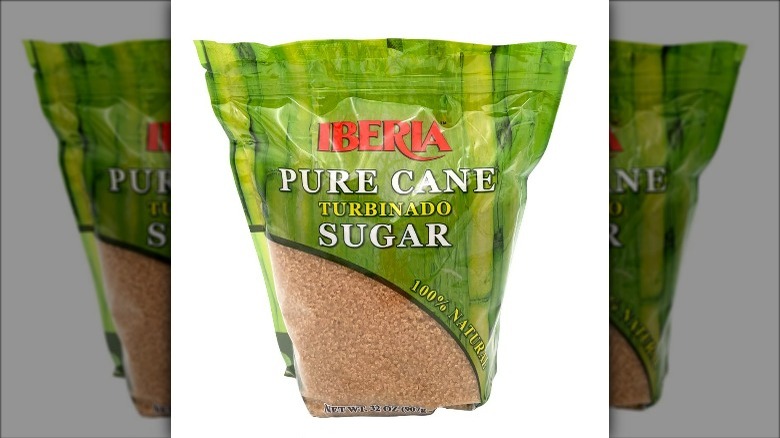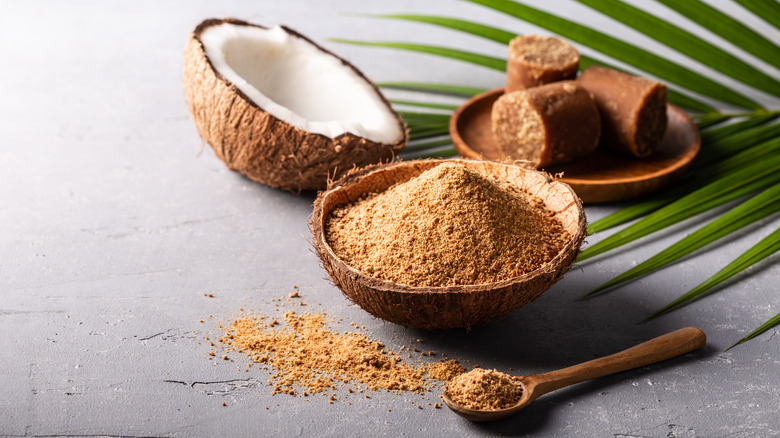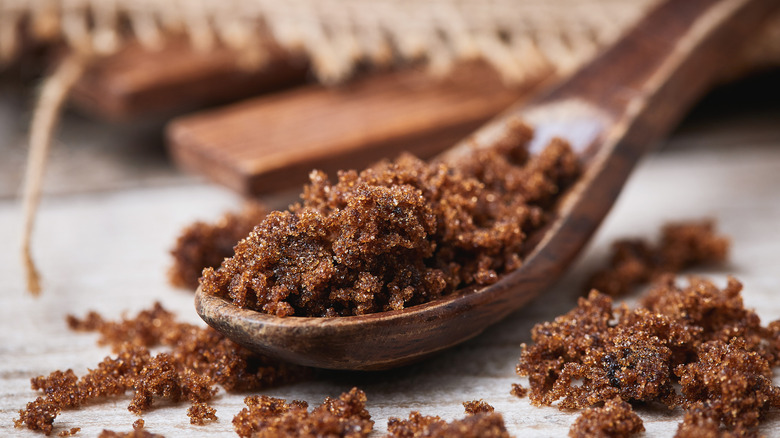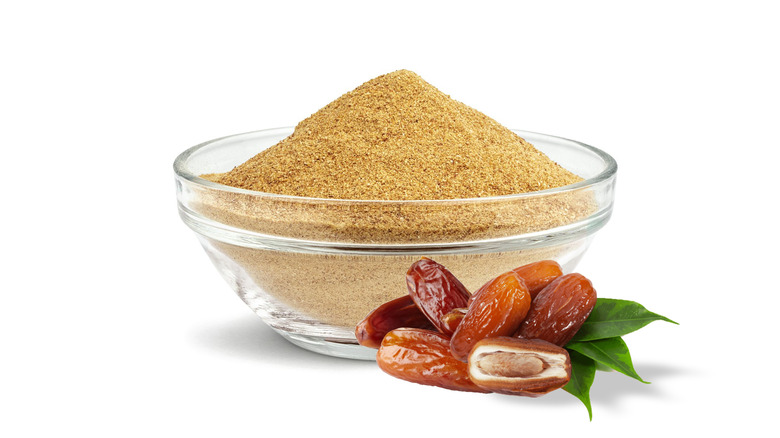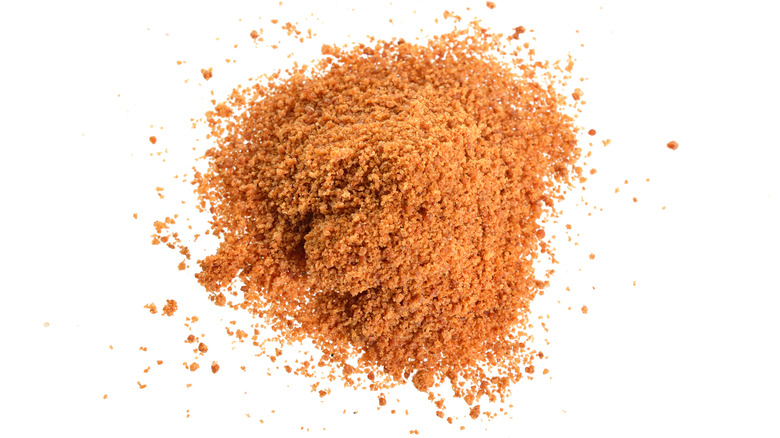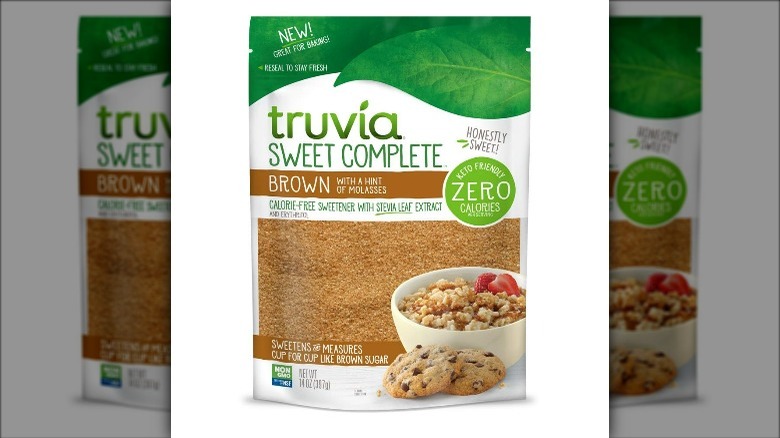The Absolute Best Brown Sugar Substitutes
It's time to make the cookies! Out comes the flour, the granulated sugar, butter, vanilla, eggs, and — wait! Where's the brown sugar? It's not in the pantry like it should be. Maybe someone accidentally put it in the cupboard with the cereal. No, not there either. The inevitable truth sets in: You're out of brown sugar!
While you may consider skipping the addition altogether, resist that temptation. The wet sand-like mixture of granulated sugar and added molasses is responsible for sweet, robust, and caramel-like flavors in a recipe. Whether you're using light or dark brown sugar (the latter uses more molasses) it will caramelize to create a rich flavor profile, a balanced crunch, a gooey center, or a richer sauce.
When it comes to baking, brown sugar offers the perfect balance between crunchy and chewy in a cookie. Granulated sugar gives us crunchy edges, but brown sugar is key to a chewy center. In quick bread recipes like banana bread, it offers moisture to your loaf. For more savory recipes like Asian garlic noodles, adding brown sugar to the sauce will offer sweetness and a robust flavor.
Now, back to the problem at hand — if you're out of brown sugar, not to worry. Your pantry is likely stocked with other ingredients that can be used in its place. Let's take a look at the best brown sugar substitutes.
Molasses
Molasses by itself is a form of sugar. According to The Sugar Association, it's the sticky substance that's separated from the crystals while cane sugar is refined. The longer it spins in the centrifuge the darker the molasses becomes. This process is what gives molasses its rich and robust caramel taste.
Since molasses is one of the two ingredients (the other being granulated sugar) that comprises brown sugar, this substitute may seem a little spot on, but it's for good reason: You can use it to make your very own brown sugar from scratch.
There's no special processing or secret formula to making brown sugar from white sugar. It is just a matter of measuring, pouring, and mixing. Use a ratio of 1 cup of granulated sugar plus 1 tablespoon of molasses for light brown sugar. Adjust up to 2 tablespoons of molasses for dark brown sugar. It should be noted that straight molasses cannot be used as a brown sugar replacement since it has the potential to add an overwhelming bitterness to your recipe.
Granulated sugar
Among the many different types of sugar, the standard white granulated variety is the most familiar. Granulated sugar comes from sugar cane or sugar beets. It gets processed, removing all molasses, and left to dry into crystals. It is then further ground into the proper size of granule depending on its purpose. Since molasses is removed, granulated sugar has no to low moisture content and is pristinely white in color.
As a replacement for brown sugar, granulated sugar works best in recipes that don't require the moisture or robust flavor of brown sugar. Swap it in at a one-to-one ratio for light sauces, marinades, and noodles dishes.
Baked goods that call for brown sugar often need the moisture that molasses provides. If using granulated sugar as your brown sugar substitute, that moisture will need to be replaced to get the right texture in your baked goods. Adding molasses would be ideal but combining a cup of sugar with a tablespoon of dark corn syrup, real maple syrup, or honey, would also work as a light brown sugar substitute (double the liquid if you're replacing dark brown sugar). In a pinch, these options will get you where you need to go.
Honey
Honey has been sweetening our world for thousands of years (via Smithsonian). Beyond its versatility, there is another reason you should always have honey in your pantry: Its potential health benefits. A 2009 study revealed that a daily serving of honey may help lower LDL cholesterol, otherwise known as the "bad" cholesterol, while raising "good" HDL cholesterol.
The most popular honey we think of comes in a little bear-shaped squeeze tube at our grocery store. This tends to be a well-rounded honey with a mild flavor, making it suitable for most purposes. There are also artisanal varieties like clover, lavender, or buckwheat. This means that the honey was farmed from bees that pull nectar from these particular plants.
Since honey is sweeter than sugar, you'll want to use less of it as a substitution for brown sugar, half per Big Island Bees. When baking, lower your other liquid additions by ¼ cup per 1 cup of honey due to its high water content. Since honey does not have a high heat tolerance, make sure to reduce your oven temperature by 25 degrees, so your baked goods do not burn. You'll also want to add ¼ teaspoon of baking soda per 1 cup of honey to reduce acidity and lighten the density.
Agave nectar
Agave nectar comes from the sap found in the agave plant, which should familiar to tequila drinkers. To make the agave sap ready for consumption, it is boiled down to a syrup until the desired color is reached. Then is bottled for use as a sweetener or, in this case, a brown sugar substitute that ranks low on the glycemic index.
There are different color grades to agave nectar and to get the flavor of brown sugar you will want to seek the darker syrup if possible. When it comes to using agave nectar, it's recommended more for beverages or liquid recipes, like sauces, rather than baking.
Agave nectar is sweeter than brown sugar, and therefore less is needed in a recipe if you're using it as a substitution. According to Spiceography, use ⅔ cup agave nectar for every 1 cup of brown sugar called for in a recipe. You can also use agave nectar to make homemade brown sugar if you have granulated sugar in the pantry. Add 1 tablespoon of agave nectar to 1 cup of granulated sugar if the recipe calls for light brown sugar. For a dark brown sugar substitute, double the nectar.
Maple syrup
Maple syrup is truly nature's gift to any of us who love fluffy pancakes or waffles. From lattes to bacon, it has made its mark on our hearts, stomachs, and in big business. According to Michigan State University, tapping trees for the sweet stuff is one of the oldest agricultural enterprises in the United States and the industry shows no signs of slowing down.
Not all maple syrups are created equal, however. Varieties include Grade A Golden Color, Grade A Amber Color, Grade A Dark Color, and Grade A Very Dark Color. Though all these grades are excellent and would work, prioritize the Grade A Dark Color or Grade A Very Dark Color to mimic the classic robust brown sugar flavor.
Regarding conversion rates, Blogchef recommends ¾ cup of maple syrup to 1 cup of brown sugar. Similar to honey, you will also be required to reduce your overall liquids by removing 3 tablespoons per every ¾ cup of maple syrup. In addition, you will want to add ¼ teaspoon of baking soda unless your recipe calls for sour cream or buttermilk. Remember to reduce your oven by 25 degrees since liquid sweeteners brown faster than standard sugar.
Not surprisingly, this substitution works well with recipes where a maple flavor is welcomed, such as barbecue sauces, banana bread, oven-baked bacon, and walnut bread.
Turbinado sugar
We just love the way turbinado sugar sparkles like tiny, rough cut, golden amber jewels. Though similar to brown sugar, it differs in a few ways. First, it is processed into larger crystals when compared to brown sugar. Second, it is raw sugar, which is how the molasses is retained and then noticed by our tastebuds. Keep in mind though, that because more molasses is not added back into the sugar, it lacks the same moisture content of traditional brown sugar.
Wellness Warrior tells us that because of its relatively large crystal size, it is not suitable for all brown sugar substitutions. In baking, it could change the texture of your finished product, as the larger crystals do not always dissolve as needed. In addition, you will be lacking the moisture that traditional brown sugar contains. Due to its larger crystal size, turbinado sugar is primarily used for topping muffins, pastries, and gingersnap cookie recipes, for a little bit of a sweet crunch. Packs of Sugar in the Raw add a robust, swirl of sweetness in your morning coffee.
Turbinado sugar also works well in deeper flavored sauces that get cooked, thus allowing the sugar to dissolve. For these uses, a one-to-one substitution ratio with brown sugar will work well.
Coconut sugar
Coconut? Like piña coladas and the scent of suntan lotion in the air kind of coconut? Well, not exactly. Coconut sugar is derived from the sap of the coconut tree flower. Similar to most sugars, it is boiled down until the water is evaporated, and is then dried and processed into sugar crystals. It is similar in color to traditional brown sugar and when compared to other alternative sugars, its taste resembles brown sugar the most.
Coconut sugar is a great brown sugar substitute and can be swapped for baking at a one-to-one ratio. That's right, it's great for cakes, cookies, brownies, you name it. There are a couple of rules, however, when substituting it for brown sugar (via Spiceography). First, when using coconut sugar for recipes such as toffee or hard caramels, avoid direct, high heat. Coconut sugar does not work well in these types of recipes as it browns quickly and does not have a high heat tolerance. Second, add additional moisture into your baked goods recipe in the form of yogurt, milk, or mashed banana. Otherwise, your baked goods will have a dry and heavy texture.
Muscovado sugar
Muscovado sugar, also known as Barbados sugar, is the fancy artisan sugar on our list. It is considered an unrefined sugar because the molasses is kept in the sugar, rather than removed. The molasses is particularly intense in this sugar, which makes it darker, and stickier, and gives it a stronger flavor. The way in which muscovado sugar is processed makes its texture, which is similar to wet sand, the closest to that of traditional brown sugar.
It's worth mentioning the nutrients found in muscovado sugar. Organic Facts notes that since muscovado sugar contains more molasses, it also provides higher levels of magnesium, calcium, potassium, and iron compared to traditional brown sugar.
As explained by Healthline, muscovado sugar has deep notes of toffee with burnt undertones. This is important to keep in mind as it will work better in darker baked goods — think chocolate-based recipes like brownies. Savory sauces are a great choice for muscovado sugar as well, especially glazes and barbecue sauces. It is also tolerant to high heat and works well to create candy, such as toffee and caramels, with strong hints of molasses. You can use muscovado sugar in place of brown sugar at a one-to-one ratio.
Date sugar
This is probably the most creative form of sugar, to say the least, which may explain the higher price tag compared to other sugar substitutes. Originating in the Middle East, date sugar is made from grinding dehydrated dates into granules that at first glance resemble traditional brown sugar. If you take a closer look, you'll notice that date sugar is less granular and more fibrous. It has a similar caramel-like flavor to brown sugar and is similar in texture.
Date sugar is well known for its health benefits. According to One Green Planet, dates are filled with fiber, iron, B vitamins, and potassium. So it's a good feeling to know that when you use date sugar you are getting the added bonus of these nutrients.
Remember the high fiber detail we just mentioned? Well, not all those fibers are lost during dehydrating and grinding. Date sugar has small fibers that will not dissolve when cooked or baked. This is important to keep in mind when thinking about the texture you hope to obtain with your recipe. Would this sugar be good for a smooth donut glaze? Simply put, no. Bit it is well-suited for rubs that call for brown sugar as well as simple baked goods that can handle the fiber-like texture. You can use date sugar in place of brown sugar at a one-to-one ratio.
Palm sugar
You guessed it! Palm sugar comes from a palm tree — the nipa palm to be exact (via Primal Pal). Sap from within the trunk of the tree is collected, thickened through a boiling process, and then broken up into granules to be used in place of traditional sugar. It is finer in texture than turbinado sugar and has the caramel-like notes we love about brown sugar. (One thing to keep in mind: Palm sugar comes in cakes, granules, and syrup. In this case, we are referencing the granule version, as it comes ready to use and most resembles brown sugar.)
Perhaps one of the best advantages, besides the flavor, of using palm sugar as a brown sugar substitute is how nutrient-dense it is. Primal Pal breaks it down like this: Because palm sugar is not refined, it keeps most, if not all, of its nutrients including potassium, iron, zinc, and B vitamins. It also rates low on the glycemic index. This means it doesn't spike your blood sugar so there will be no subsequent crash to follow.
Palm sugar has a high heat tolerance, which makes it perfect as a brown sugar substitute at a one-to-one ratio for making candy like peanut brittle, pralines, or hard caramels. it will also work as a replacement for savory dishes and sauces that call for brown sugar.
Zero-calorie sweeteners
If you've tried jumping on the keto or paleo train or just wanted to cut back on your calorie intake, you're probably familiar with brands like Swerve, Truvia, Whole Earth, or Splenda which offer brown sugar substitutes. Similar to how zero-calorie soda won't offer the same flavor punch as the sugar-packed standards, these alternatives, which typically combine artificial sweeteners with a touch of molasses, won't quite compare to the complexity of the real thing, but they come close.
Each brand tends to advertise that its product can be used in cooking, baking, and sweetening beverages like coffee, tea, or hot chocolate. If you're not sure where to start with a zero-calorie brown sugar substitute, the manufacturers' website will often include a list of recipes created specifically for its product. This may be a great help as you get accustomed to using them.
Most zero-calorie brown sugar substitutes can be used as a one-to-one replacement with brown sugar. Check the directions to be sure though, as each brand may differ.
